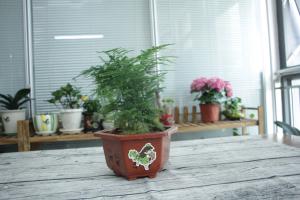How Close Can You Plant Trees to Your Neighbor?
Planting trees on your property is a great way to add beauty and value to your home. However, it’s important to consider your neighbors when planting trees. How close can you plant trees to your neighbor's property line? The answer is not straightforward, as it depends on several factors.
Local Regulations
The first factor that determines how close you can plant trees to your neighbor is local regulations. Most cities and towns have zoning ordinances that regulate how close you can plant trees to your property line. These ordinances vary by location, so it’s important to check with your local government for specific rules.
For example, in some areas, you may need to obtain a permit before planting trees. The permit may require you to provide a plan for where you will plant the trees, how you will take care of them, and how close they will be to the property line. In other areas, there may be height restrictions on trees that are planted near property lines.
Property Lines
The second factor to consider is the location of your property line. Knowing where your property line is located is crucial when deciding how close you can plant trees to your neighbor. If you plant trees on your neighbor’s side of the property line, you may be liable for damages if the trees cause any harm to your neighbor’s property or person.
It’s a good idea to have a clear understanding of your property lines before planting any trees. You can hire a surveyor to mark the property line for you.
Tree Type and Rooting System
The third factor to consider when planting trees near your neighbor’s property is the type of tree and its rooting system. Some trees have shallow roots that can damage sidewalks, driveways, and even the foundation of neighboring homes. Other trees have aggressive roots that can invade plumbing and septic systems.
It’s important to choose trees that have a less aggressive rooting system and are less likely to cause damage to your neighbor’s property. Some recommended trees include, but are not limited to, dogwoods, flowering cherry trees, and Japanese maples.
Talking to Your Neighbors
Even if you are able to plant trees within the legal limits and the trees have a suitable rooting system, it’s a good idea to communicate with your neighbors before planting them. This can help prevent any issues or misunderstandings that may arise in the future.
You can inform your neighbors of your plans to plant trees and where you plan to plant them. If your neighbor has any concerns or objections, you can discuss them and possibly find a solution that works for both parties.
Conclusion
The decision to plant trees on your property is a personal one. However, it’s important to consider your neighbors when making this decision. Understanding local regulations, property lines, tree type, and talking to your neighbors can help ensure a positive outcome for everyone involved.

 how many times do yo...
how many times do yo... how many planted tre...
how many planted tre... how many pine trees ...
how many pine trees ... how many pecan trees...
how many pecan trees... how many plants comp...
how many plants comp... how many plants can ...
how many plants can ... how many plants and ...
how many plants and ... how many pepper plan...
how many pepper plan...

































